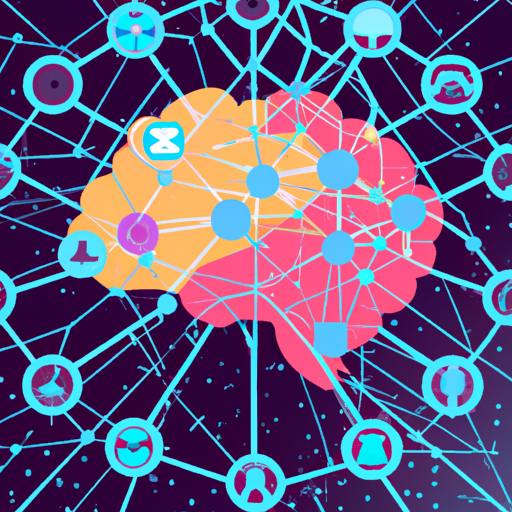AI-based Recommendation Engines
Have you ever wondered how platforms such as Netflix or Amazon seem to always suggest content or products that align perfectly with your taste? This is massive credit to the prowess of AI-based recommendation engines. These sophisticated tools use complex algorithms and artificial intelligence to conduct a detailed analysis of your preferences, behavior, and patterns, and predict what you may like or need. As we delve deeper into this article, you’ll gain a broader understanding of the concept and working of these AI engines.
Furthermore, they stand as an integral part of numerous digital platforms we interact with daily, from social media to e-commerce portals. They effectively curate a personalized user experience, saving you from the overwhelming flood of data on these platforms. Moreover, perhaps more intriguingly, they have an uncanny ability to know what you want, even before you realize you want it. As we continue to explore this topic, you’ll learn about the core components that enable this seemingly magical function and the different types of recommendation systems, among other aspects.
Understanding AI-Based Recommendation Engines
Artificial Intelligence (AI) has become a crucial part of many industries, enhancing processes, and offering new solutions. One of the practical applications of AI is in the development of recommendation systems. In this article, we will take a deep dive into understanding AI-based recommendation engines.
Basics of AI Recommendation Engines
At its core, an AI recommendation engine is a system that uses AI to predict what users might prefer among a variety of options. The key purpose is to create a personalized end-user experience by predicting and suggesting what items or contents might be relevant to the user.
Significance of AI in Recommendation Systems
AI plays a key role in enhancing the capabilities of recommendation systems. It allows the system to process vast amounts of data, recognizing patterns and trends in user behavior. This assists in providing highly accurate and personalized recommendations which traditional algorithms would struggle to accomplish.
Different Types of AI-Based Recommendation Systems
Collaborative Filtering
Collaborative filtering is an AI recommendation approach that works by creating a matrix of user-item interactions. It uses the behavior of similar users to recommend products not yet used by the user.
Content-Based Filtering
Content-based filtering, on the other hand, focuses on item features. It uses the similarity of items to recommend to the user. It assumes that if a user was interested in a certain item, they will possibly be interested in similar items.
Hybrid Recommendation Systems
Hybrid recommendation systems utilize both collaborative and content-based filtering to produce recommendations. It provides the best of both worlds, improving the precision and relevance of recommendations.
Working Mechanism of AI-Based Recommendation Engines
Data Collection
AI-based recommendation systems begin by collecting data about users and items. This includes implicit data (such as click history or time spent on a page) and explicit data (like user ratings or reviews).
Data Analysis
After collecting data, the system interprets it to understand user behavior patterns. It uses AI to analyze the collected data and detect various trends.
Generating Recommendations
Once the analysis is complete, the recommendation engine utilizes the insights gained to predict what the user might prefer. These predictions are presented as recommendations to the user.
Continuous Learning & Improvement
These systems learn from every interaction, constantly improving their recommendations by adapting to changes in user preferences and behavior.
Role of AI and Machine Learning in Recommendation Engines
Predictive Analysis
AI and Machine Learning (ML) are useful for predictive analysis in recommendation systems. They allow the system to predict what a user will like based on their previous interactions.
Pattern Recognition
Moreover, they are instrumental in recognizing patterns in user behavior and preferences. This enables accurate and personalized recommendations.
Real-time Adaptability
AI and ML also make real-time adaptations possible. The recommendations can adjust in response to user activity, keeping the suggestions relevant and timely.
Benefits of Using AI-Powered Recommendation Systems
Personalization
AI-powered recommendation engines allow for personalization in recommendations. This enhances user engagement and retention.
Improved User Experience
By relevant and timely offering suggestions, these systems improve overall user experience leading to increased user satisfaction.
Enhanced Sales
When recommendations are accurate and personalized, user engagement increases leading to higher sales for businesses.
Applications of AI-Based Recommendation Engines
E-commerce
E-commerce platforms use AI-based recommendation engines to suggest products to customers based on their browsing history, purchase history, etc.
Streaming Services
Streaming services like Netflix and Spotify use these systems to recommend movies, shows, or music to their users.
Social Media Platforms
Social media platforms employ AI-based recommendation engines to recommend posts, friends, pages, etc., based on user activity and interactions.
Challenges in Implementing AI-Based Recommendation Systems
Data Privacy
Maintaining user data privacy while providing personalized recommendations remains a challenge.
Quality of Data
The accuracy and effectiveness of AI-based recommendation engines depend heavily on the quality of data collected.
Bias and Discrimination
There is a risk of system bias based on the historical data it learns from, leading to unethical discrimination in recommendations.
Future Trends in AI-Based Recommendation Engines
Integration with IoT
Integration with Internet of Things (IoT) for collecting data will enable even more personalized recommendations.
Improvements in AI-Algorithms
As AI technology continues to advance, so will the algorithms used in AI-based recommendation engines.
Role of Augmented Reality
Augmented Reality (AR) can enhance recommendation engines by adding a new dimension of interaction, making recommendations more immersive and engaging.
Case Studies of Successful AI-Based Recommendation Engines
Netflix
Netflix uses AI to suggest shows and movies to its users. This has greatly increased user engagement and hence, revenues.
Amazon
Amazon’s AI recommendation system has catapulted its success by suggesting accurate product recommendations to millions of its users.
Spotify
Spotify’s Discover Weekly is an excellent example of an AI-based recommendation system. It creates personalized playlists for every user, leading to enhanced user satisfaction.
Conclusion on AI-Based Recommendation Engines
Steadily Increasing Importance
AI-based recommendation engines are increasingly becoming an integral part of many online platforms due to their ability to enhance the user experience and increase business metrics.
Continued Technological Advancements
AI and ML technology continues to advance; this promises an exciting future for the capabilities of recommendation engines.
Need for Ethical Considerations
However, as these systems advance, careful attention must be given to ethical considerations such as data privacy and bias.
AI-based recommendation engines have had a huge impact on the digital landscape. While they present substantial benefits, it is important to navigate the challenges and ethical considerations that come with them. They are without a doubt a fascinating exploration of AI’s capabilities.


